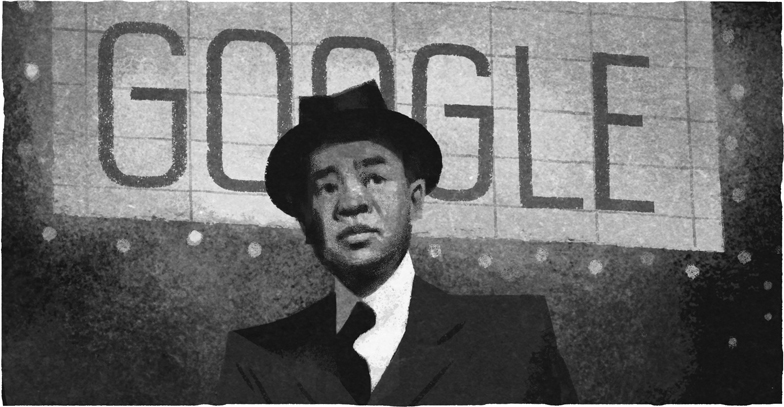Today's Google Doodle is Celebrating James Wong Howe

Today’s Doodle in the US celebrates James Wong Howe (黃宗霑), the pioneering Chinese-American cinematographer who rose to fame in the 1930s and '40s for his innovative filming techniques.
We planned to run this same Doodle honoring James Wong Howe in the US last year. However, when Hurricane Harvey struck the southern United States, we withheld the Doodle from running nationally out of respect to the events and relief effort. Though we don’t usually run Doodles more than once, Howe left such a unique and indelible mark on American cinema that we decided to run the Doodle this year on the anniversary of the release of one of his most notable works, The Thin Man (1934) - and also just in time for Asian American Pacific Islander (AAPI) Heritage Month!
Born in Guangzhou, China, Howe immigrated to the U.S. when he was five years old and grew up in Washington state. He boxed professionally in his teens, worked odd jobs, then finally started in the industry by delivering films and picking up scraps from a studio’s cutting room floor.
Throughout his career, he used lighting, framing, and minimal camera movement to express emotion. He accidentally discovered how to use dark backdrops to create color nuances in black-and-white film. He pioneered using wide-angle lenses, low key lighting, and color lighting. Howe also made early use of the crab dolly, a camera dolly with four wheels and a movable arm supporting the camera.
In contrast to the success of his work life, Howe faced significant racial discrimination in his private life: he became a U.S. citizen only after the repeal of the Chinese Exclusion Act; due to anti-miscegenation laws, his marriage was not be legally recognized in the U.S. until 1948. Despite the barriers he faced, Howe retired with two Oscar awards as one of the most celebrated cinematographers of his time.
Special thanks to Don Lee, nephew of James Wong Howe, for his partnership on this project. Below, Don shares thoughts about his uncle:
I was eleven years old when I first met my uncle Jimmie, known to many as the cinematographer James Wong Howe. Even though I had never seen any of his films, I was in awe of him and his accomplishments. Upon meeting him, he quickly put me at ease with his warmth, humor, and tendency to be a jokester.
Two years later, my mother, sisters, and I traveled from Washington state to Hollywood to visit Jimmie and his wife, author-poet Sanora Babb. They embraced us as family. I’ll never forget our brief visit with them: we went to Disneyland, dined in Chinatown, watched home movies, and visited the sets of major studios. Several years later, I moved to Los Angeles to attend college. While there, I often spent time with Jimmie and Sanora at their home and got to know him as an avid reader and storyteller who loved dogs, baseball, golf, and most of all Sanora.

Pictured: James Wong Howe and Sanora Babb
Photo credit: Dorothy Babb
While Jimmie had a reputation for being very serious and dedicated, he was also known as a willing listener and collaborator with his peers. That’s how I most remember him. He encouraged me in my studies, introduced me to film students he was mentoring, and took my college friends and me out for Dim Sum in Chinatown and to Angels baseball games. Jimmie proved, over the time I knew him, to be a consummate artist, valued friend and affectionate uncle. He is, and will always be, very much a part of my life.